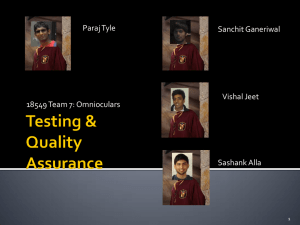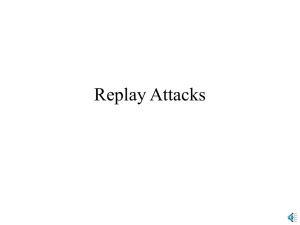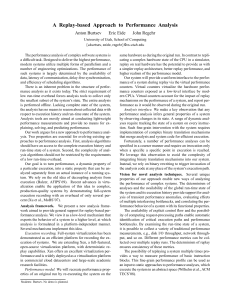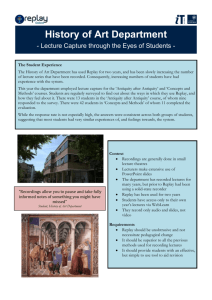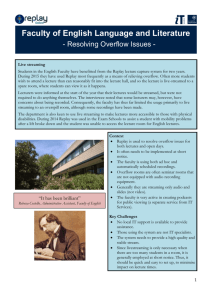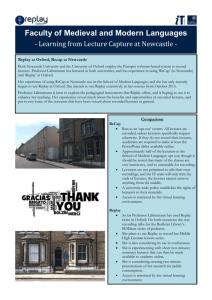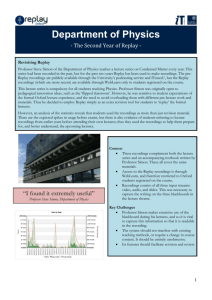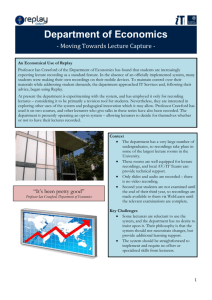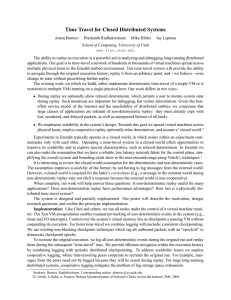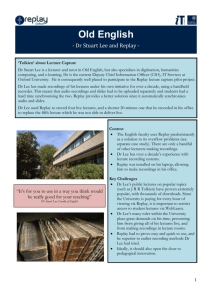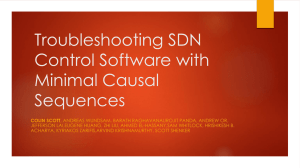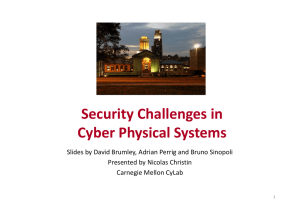Cont-ed snapshot
advertisement
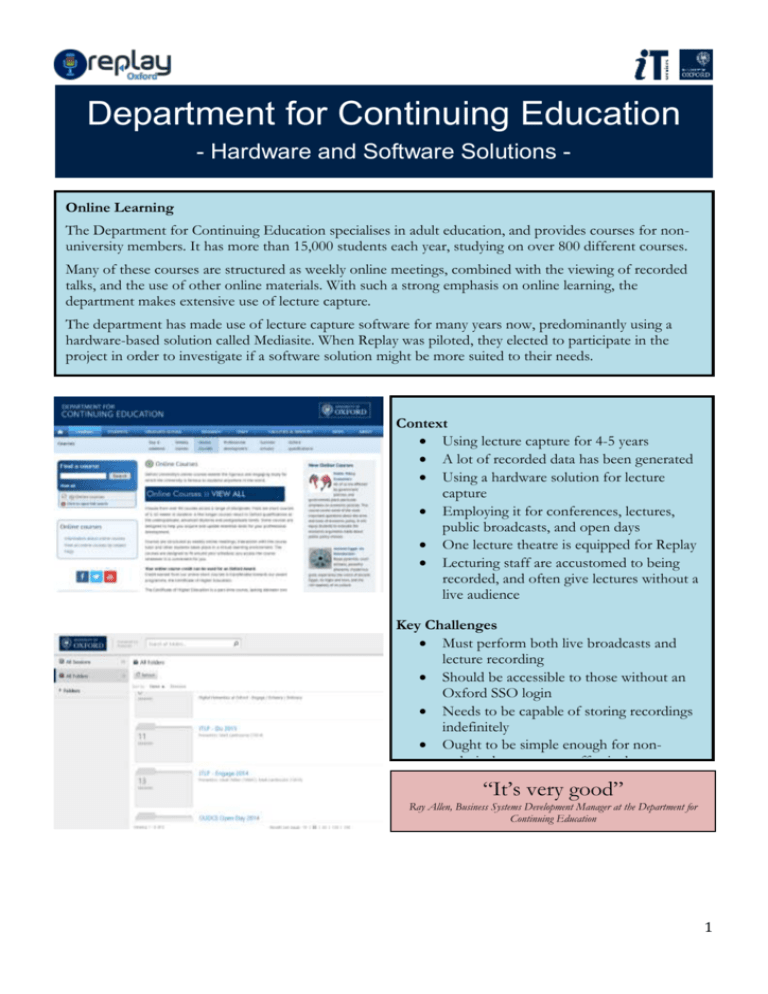
Department for Continuing Education - Hardware and Software Solutions Online Learning The Department for Continuing Education specialises in adult education, and provides courses for nonuniversity members. It has more than 15,000 students each year, studying on over 800 different courses. Many of these courses are structured as weekly online meetings, combined with the viewing of recorded talks, and the use of other online materials. With such a strong emphasis on online learning, the department makes extensive use of lecture capture. The department has made use of lecture capture software for many years now, predominantly using a hardware-based solution called Mediasite. When Replay was piloted, they elected to participate in the project in order to investigate if a software solution might be more suited to their needs. Context Using lecture capture for 4-5 years A lot of recorded data has been generated Using a hardware solution for lecture capture Employing it for conferences, lectures, public broadcasts, and open days One lecture theatre is equipped for Replay Lecturing staff are accustomed to being recorded, and often give lectures without a live audience Key Challenges Must perform both live broadcasts and lecture recording Should be accessible to those without an Oxford SSO login Needs to be capable of storing recordings indefinitely Ought to be simple enough for nontechnical users to use effectively “It’s very good” Ray Allen, Business Systems Development Manager at the Department for Continuing Education 1 “AV is very important” “[A software solution] should be easier; it’s University supported, so it should be better supported; it’s more scalable” “There are all sorts of advantages to using [a software solution]” Hardware vs Software Hardware Solutions Advantages Local staff have more control over the hardware setup, and can therefore ensure that it is sufficiently powerful and of good enough quality to perform the task. Disadvantages Extra hardware must be purchased and installed in every room where recording takes place. The hardware is often expensive, and some models are prone to breaking, thus requiring replacement. Specialist knowledge is needed to run and maintain the hardware. Implementation of such systems is often quite ‘sophisticated’ and difficult to learn. This may cause problems when technical members of staff leave the department. Future Plans at the Department for Continuing Education Continue using and testing Replay. Wait for central IT Services to make a decision on a University-wide solution before choosing the option that best suits the needs of the Department for Continuing Education. Software Solutions Advantages The software runs off a laptop or desktop computer ̶ no extra hardware needs to be purchased or installed The solution is portable since the laptop can be moved from room to room. No specialist knowledge is required to run it. It is more easily scalable. Disadvantages The local IT team has less control over the hardware being used, and so it is harder to ensure that it is sufficiently powerful and of good enough quality. The computer doing the recording must have the software pre-installed, which is an extra step for those presenters who wish to use their own laptops. Conclusions While the IT team at the department has a ‘technical preference’ for a software solution they have yet to make a final decision. The department prefers to make many of its recordings publicly available, which may not be financially viable under the Replay system as it currently stands. Nevertheless, the department will seriously consider whichever solution the central University considers to be the ‘best of breed’, and so is waiting to see what course the rest of the University chooses before deciding on its own path. Oxford plans to roll out Replay as a full service in 2016 Want to find out more? Contact the Replay team at: replay@it.ox.ac.uk Check out the latest Replay news at: http://blogs.it.ox.ac.uk/lecture-capture 2
